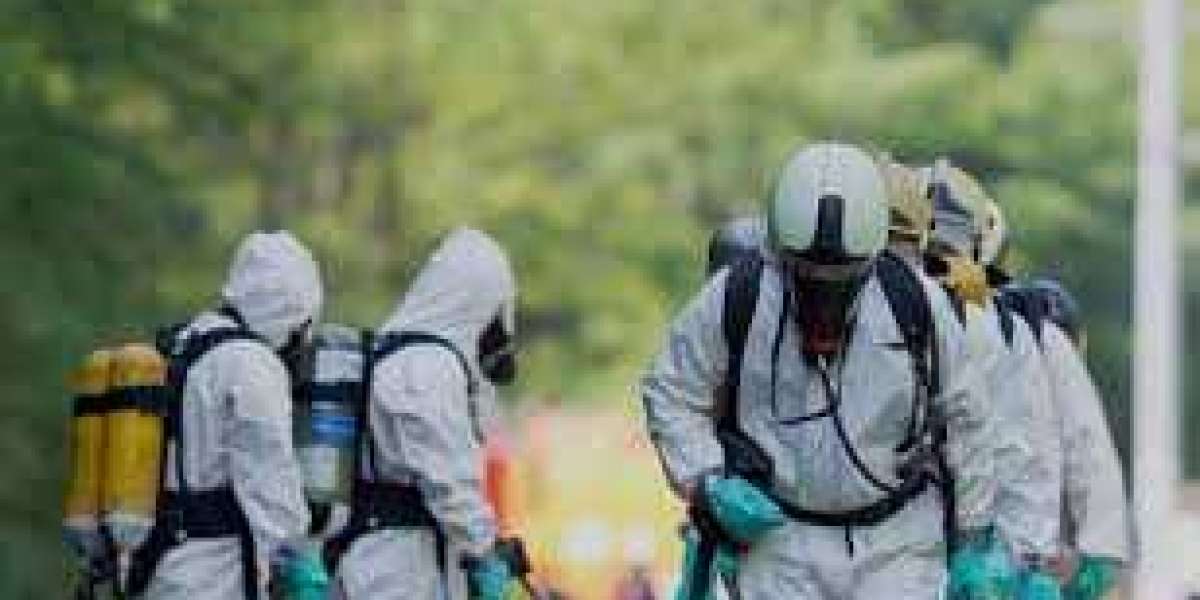Ensuring workplace safety is a top priority for any employer, but when it comes to biohazard cleanup, the stakes are significantly higher. Biohazardous materials include substances that pose a risk to human health, such as blood, bodily fluids, chemicals, and other dangerous materials. Employers must understand how to handle these hazardous situations to protect their employees, comply with legal requirements, and maintain a safe working environment. In this article, we will cover the essential aspects of biohazard cleanup and the crucial workplace safety measures employers need to implement.
Understanding Biohazards in the Workplace
Biohazards can arise in various industries, from healthcare facilities to manufacturing plants. These hazards may include bloodborne pathogens, chemical spills, or infectious waste, all of which can have dire consequences if mishandled. Knowing what constitutes a biohazard is the first step in addressing the risks they pose to employee health and safety.
Common Types of Biohazards
- Bloodborne pathogens: Pathogens like HIV, hepatitis B, and hepatitis C are spread through blood and bodily fluids.
- Biological agents: Infectious microorganisms such as viruses, bacteria, fungi, and parasites that can cause disease.
- Chemical spills: Toxic chemicals and hazardous substances that can lead to environmental contamination and pose serious health risks.
- Sharps: Needles, scalpels, and other objects that can puncture or cut the skin, potentially transmitting infectious diseases.
Employers need to identify potential biohazardous materials in their workplace and take proactive steps to mitigate risks through proper handling, cleanup, and disposal protocols.
Regulations and Compliance for Biohazard Cleanup
Strict regulations govern the handling and disposal of biohazardous materials. Compliance with Occupational Safety and Health Administration (OSHA) standards, as well as other regulatory bodies like the Environmental Protection Agency (EPA), is non-negotiable. Employers must understand these laws to avoid costly penalties and ensure a safe working environment for all employees.
OSHA’s Bloodborne Pathogens Standard
One of the most critical regulations for employers is OSHA's Bloodborne Pathogens Standard (29 CFR 1910.1030). This standard mandates that employers take specific precautions to protect employees who may be exposed to bloodborne pathogens or other infectious materials. Key requirements include:
- Exposure Control Plans: Employers must develop a written plan that outlines how to handle potential exposure incidents and the procedures for biohazard cleanup.
- Personal Protective Equipment (PPE): Providing employees with necessary protective gear such as gloves, masks, gowns, and face shields.
- Training: All employees who may come into contact with biohazardous materials must receive proper training on handling procedures, protective equipment, and cleanup protocols.
EPA Regulations
The EPA enforces the Resource Conservation and Recovery Act (RCRA), which regulates the proper disposal of hazardous waste, including biohazardous materials. Employers must ensure that biohazardous waste is disposed of following the EPA’s guidelines to avoid environmental contamination and public health risks.
Steps for Effective Biohazard Cleanup
Cleaning up biohazards requires specialized knowledge, equipment, and protocols. A detailed and thorough approach is necessary to ensure safety and compliance with health regulations. Here are the steps employers need to follow for effective biohazard cleanup:
1. Securing the Area
The first step in biohazard cleanup is to secure the area where the hazardous material is present. This includes:
- Isolating the contaminated zone to prevent further exposure.
- Using signage and barriers to alert employees of the biohazard.
- Restricting access to trained personnel only.
2. Proper Personal Protective Equipment (PPE)
Wearing the appropriate PPE is critical when handling biohazardous materials. This may include gloves, masks, eye protection, gowns, and respirators, depending on the type of hazard. Employers must ensure that their staff is equipped with the correct PPE and trained in its use.
3. Cleaning and Disinfecting
Once the area is secured and employees are protected, the actual cleanup can begin. Employers should use industry-approved disinfectants and follow a detailed cleaning protocol to ensure that all traces of the biohazard are eradicated. Cleaning involves:
- Removing any contaminated materials (such as furniture, equipment, or waste).
- Using appropriate cleaning agents to disinfect surfaces.
- Allowing proper ventilation during and after the cleanup process.
4. Disposal of Biohazardous Waste
After the cleanup, biohazardous waste must be disposed of according to OSHA and EPA guidelines. Employers should work with licensed biohazard disposal companies to ensure that waste is handled and transported safely. Proper labeling and containment are critical to preventing accidental exposure during the disposal process.
5. Final Inspection and Clearance
The final step in biohazard cleanup is conducting a thorough inspection to ensure the area is free of contamination. This may involve air quality testing, surface swabs, or other verification methods. Once the area is deemed safe, it can be reopened for normal operations.
Workplace Safety Measures for Biohazard Prevention
Prevention is always better than cure. Employers can take steps to minimize the risk of biohazards in the workplace by implementing proactive safety measures. Here’s how employers can safeguard their workforce:
1. Regular Training and Awareness Programs
Employees must be regularly trained on the risks associated with biohazards and the proper procedures for handling hazardous materials. Training programs should be updated periodically to reflect any changes in regulations or workplace practices.
2. Proper Equipment and Supplies
Providing employees with the right tools, such as spill kits, biohazard disposal containers, and PPE, can significantly reduce the risk of exposure. Employers should also ensure that all equipment is regularly inspected and maintained.
3. Developing an Emergency Response Plan
Every workplace should have a comprehensive emergency response plan for dealing with biohazard incidents. This plan should outline the steps to be taken in the event of a spill or contamination and assign responsibilities to specific employees.
4. Encourage a Safety-First Culture
Fostering a workplace culture that prioritizes safety is key to minimizing biohazard risks. Employers should encourage employees to report any potential hazards immediately and ensure that safety protocols are followed at all times.
Why Employers Need to Take Biohazard Cleanup Seriously
Failure to address biohazard cleanup and prevention can have serious consequences for both employees and the company. Employees exposed to biohazardous materials are at risk of contracting life-threatening diseases or sustaining injuries, which can result in legal liabilities for the employer. Moreover, neglecting workplace safety can damage a company's reputation and result in costly fines from regulatory bodies.
Taking proactive measures to address biohazard cleanup and ensure workplace safety not only protects employees but also helps companies avoid unnecessary risks and liabilities. Employers must stay informed about the latest regulations, invest in proper training, and maintain the necessary safety protocols to keep their workplace safe and compliant.








